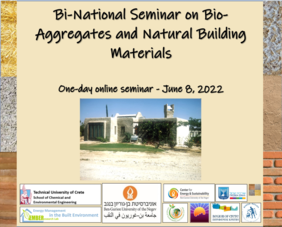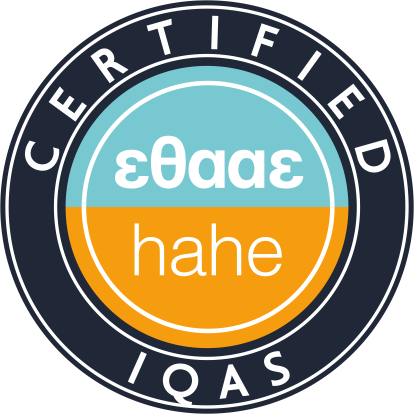Buildings account for nearly 50% of the overall energy used in OECD countries. 40% are Operational Energy (OE), the energy used to heat, cool and light buildings, and operate their mechanical, electrical and electronic systems. Another 10%, called Embodied Energy (EE), are invested in the materials, from extraction of raw materials and their processing into building materials, their transportation and the construction of the buildings.
Among other attempts to lower this vast amount of energy, efforts have been invested in the upgrade and use of natural low EE materials, some of them used in the past (e.g., clays, adobe, rammed earth, light straw-clay), others developed in recent years (e.g., hempcrete and mycelium). When appropriately used, such materials can also lower the OE of the buildings, by absorbing and releasing heat and humidity, thus creating a healthier indoor environment.
This seminar, jointly organized by the Technical University of Crete (TUC), Greece, and the Ben-Gurion University of the Negev (BGU), Israel, will present and review critically research and pilot projects, breakthroughs and the potential embedded in such materials, alongside their limitations and constraints, many of them shared by the two countries.
Participation is free and no registration is needed for this meeting.
When: Wednesday, June 8, 2022, 9:30 - 14:30 - Athens Time
How: https://tuc-gr.zoom.us/j/91977343031?pwd=bVRHRkIyTDYrMVJJYVV0WFl5R01tQT09
The invitation and the program are attached below as a single pdf file.
















